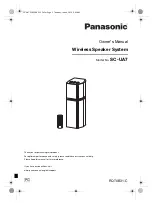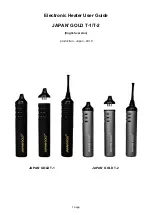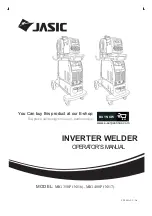
ULTRA-CUT 200 XT
Manual 0-5304
APPENDIX
A-63
Unwanted current signal due to defective sensor or defective circuit boards will most likely be present as soon
as the power up sequence completes and will be indicated as an active fault, E208. An actual short allowing real
current to flow in the pilot circuit will not occur until the inverter and pilot board are enabled near the end of
preflow. This will result in the inverters immediately being shut off and displaying a “last” or “latched” fault,
L208. An LED, D2, on the Pilot board lights when the Pilot Board is enabled.
1. 208 code before START applied:
• Defective Pilot board (current sensor circuit).
• Defective Relay PCB
• Defective CCM
Pilot PCB
Pilot current signal is on the 10 pin ribbon cable (Pilot J42, Relay PCB J3) between pins 8 (-) and 9 (+). With no
current, the signal should be zero +/- 0.05 V. Also the Relay board has an LED, D11, “Pilot Current Detected”,
which will light if the pilot current signal exceeds 0.15V. If the signal is not zero V.Pilot PCB is likely the cause.
To be sure, disconnect the Pilot board ribbon cable from the Relay board at J3. If D11 goes out, the Pilot board
was the cause. Double check by measuring pin 8 & 9 again. If it’s zero V. now, the Pilot board is defective. If
D11 is still on or pin 8 & 9 voltage still high check the Relay board.
Relay Board or CCM
If D11 on the Relay PCB is still on after the previous tests, measure the output to the CCM on the 40 pin ribbon
cable (Relay J4 to CCM J23) between pins 23 (-) and 25 (+). It should be less than 0.1V. If not, the Relay board
is bad. If voltage is zero then the CCM is defective.
2. 208 code comes on during preflow:
IM#1 and the Pilot board are enabled near the end of preflow. To have unwanted current there must be a path
(short) for current to flow between the inverter negative output (negative cable/torch electrode) and the Pilot
return/tip before the arc starter is enabled for pilot ignition.
Possible causes are:
• Short between electrode and tip due to mismatch of consumables, damaged consumables or foreign mat
-
ter between tip and electrode. An electrode at the end of its life may lose material that can short between
electrode and tip.
• Defective or incorrectly installed user supplied equipment such as torch height controls that make con
-
nections to power supply output.
• Short between power supply negative output cable and pilot cable.
• Shorted torch body.
Troubleshooting:
1. Remove and insulate (may have voltage on it) the pilot cable from the rear of the unit. Attempt to pilot. If
no 208 code shows, it confirms problem is outside the power supply.
2. Remove and check consumable for damage, cleanliness and missing (gas dist, etc.) or wrong components.
3. Disconnect user supplied equipment and see if fault still exists.
4. Inspect Arc Starter for broken/disconnected wires or burnt components.
5. Inspect inside the torch mounting tube for shorts.
6. If all else fails disconnect the pilot wire from the back of the torch head. Insulate it well or keep it away from
any metal, it may have HF (high frequency) on it when you try to start. Try to start, if the 208 is gone now
the torch head is shorted.
209
Not used. Reserved codes from the earlier product.
Summary of Contents for ULTRA-CUT 200 XT
Page 6: ...This Page Intentionally Blank...
Page 15: ...ULTRA CUT 200 XT Manual 0 5304 SAFETY INSTRUCTIONS 1 5 This Page Intentionally Blank...
Page 28: ...ULTRA CUT 200 XT SPECIFICATIONS Manual 0 5304 This Page Intentionally Blank...
Page 76: ...ULTRA CUT 200 XT INSTALLATION Manual 0 5304 This Page Intentionally Blank...
Page 160: ...ULTRA CUT 200 XT APPENDIX Manual 0 5304 APPENDIX 17 Cap Bias Bottom PCB Layout Art A 11685_AB...
Page 162: ...ULTRA CUT 200 XT APPENDIX Manual 0 5304 APPENDIX 19 Suppressor PCB Layout Art A 11684_AB...
Page 165: ...ULTRA CUT 200 XT Manual 0 5304 APPENDIX A 39 This Page Intentionally Blank...
Page 227: ......
















































